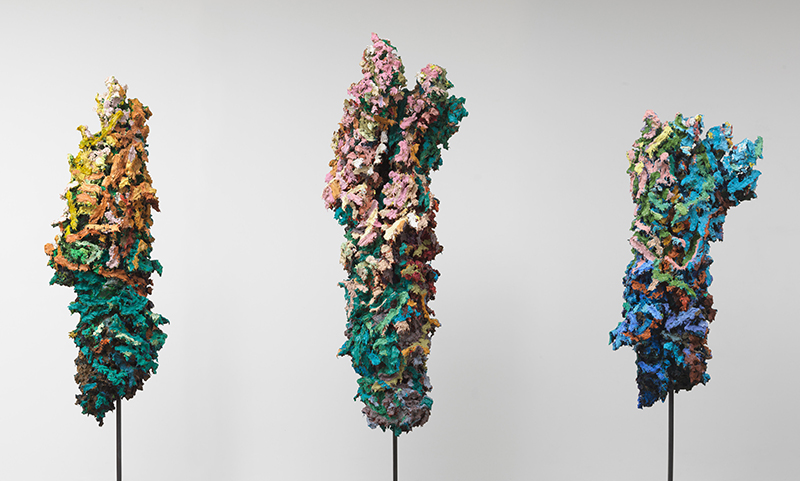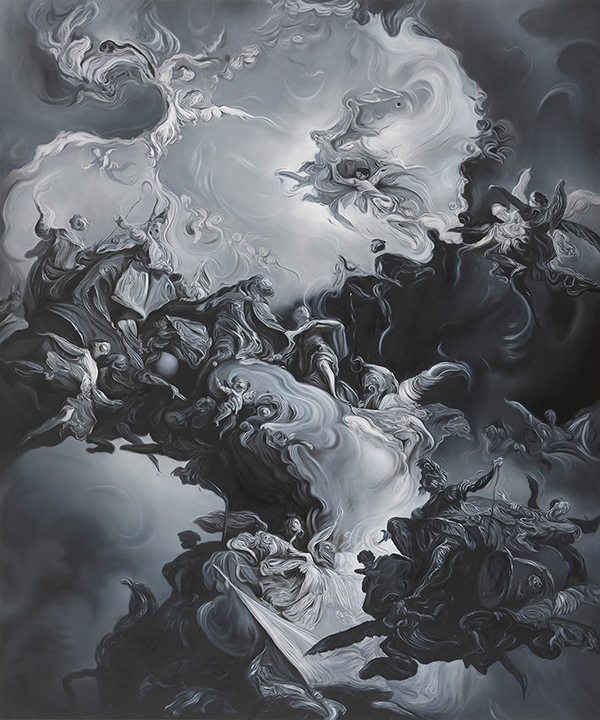ART CITIES:London-Glenn Brown
 Glenn Brown is known for the use of art historical references in his paintings. Starting with reproductions from other artist’s works, Brown transforms the appropriated image by changing its color, position and size. His grotesque yet fascinating figures appear to be painted with thick impasto, but are actually executed through the application of thin, swirling brushstrokes which create the illusion of almost photographically flat surfaces.
Glenn Brown is known for the use of art historical references in his paintings. Starting with reproductions from other artist’s works, Brown transforms the appropriated image by changing its color, position and size. His grotesque yet fascinating figures appear to be painted with thick impasto, but are actually executed through the application of thin, swirling brushstrokes which create the illusion of almost photographically flat surfaces.
By Dimitris Lempesis
Photo: Gagosian Callery Archive
The title of Glenn Brown’s solo exhibition, “Come to Dust” is taken from a song in Shakespeare’s play “Cymbeline” and evokes the ineluctability of death. The exhibition, comprising oil paintings, drawings in period frames, grisaille panel works, etchings, and sculptures, attests to the ever-intensifying dexterity with which Brown employs paint, content, and form. In “Die Mutter des Künstlers” (2016), a female nude offers her hand, her finger dripping blood ,presumably from a visible wound on her side, in a gesture that is both maternal and Christ-like, but with a sickly, accusative edge. Not only does Brown distort the proportions of the figure from Eugene Delacroix’s “Nu Feminin assis” (1820), he also removes the figure’s head, plunging the viewer into his own alternate reality. Bathing the painting in bluish tones (an evident nod to Picasso’s Blue Period), Brown asserts the history of art to be dynamic, not static. Another headless figure is visible in the gut-wrenching work titled “Passchendaele” (2017), in which an heroic male figure derived from another Delacroix work strides resolutely forward against a background of greens and yellows, colors that subvert the ideals of French Romanticism. In “Music of the Mountains” (2016), a graphic work on panel, Brown paints using only black and white lines over a neutral ground. Sharp, elongated strokes are layered meticulously and deliberately as Brown overlays and intermingles portrait heads from Raphael and Guido Reni to create depth and animation on a fused yet fractured entity that hovers between representation and dissolution, tranquility and unrest. Brown also places sculpture as a central point of his practice. They are created by accumulating thick layers of oil paint over structures or found bronze casts. His sculptures, deliberately emphasizing the three-dimensional quality of oil brushstrokes, stand in stark contrast to his flat paintings. The forms of his sculptures and the color combinations used reference other artists’ paintings and sculptures. “Ain’t No Flies on the Lamb of God” (2017) is comprised of three truncated, upside-down feet, smothered in paint. Inspired by the motifs Georg Baselitz, they are also an absurdist interpretation of the Crucifixion.
Info: Gagosian Gallery, 20 Grosvenor Hill, London, Duration: 24/1-17/3/17, Days & Hours: Tue-Sat 10:00-18:00, www.gagosian.com


